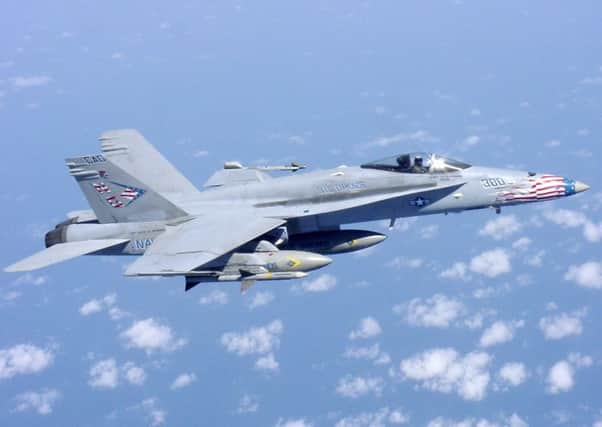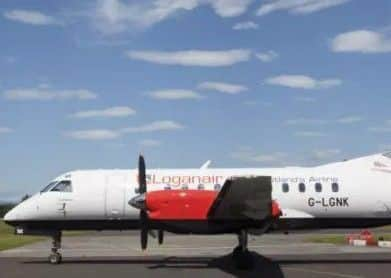LoganAir plane in near miss with US fighter jet over Shetland


The Loganair Saab 340 was approaching Sumburgh Airport on Shetland on August 8 last year when it came within 3600ft vertically and 2.1 nautical miles laterally of a US FA-18 Super Hornet fighter.
The supersonic combat jet, which has a top speed of over 1180 per hour, had taken off from a US aircraft carrier taking part in the multinational Saxon Warrior 17 exercise off the coast.
Advertisement
Hide AdAdvertisement
Hide AdThe civilian pilot, who was travelling at 300km per hour, did not see the military aircraft potentially just a few seconds away, but received a warning from his onboard traffic collision and avoidance system (TCAS) to “descend, descend”. He disconnected autopilot and manoeuvred the plane until being advised he was “clear of conflict”.


The pilot later reported the near-miss to the UK Airprox Board (UKAB) and said there was a “high risk” of collision.
An investigation found that the US aircraft carrier was positioned 15 nautical miles from its intended operating area which would have allowed the jet pilot segregated airspace and unrestricted climb potential after take-off.


The jet entered in to controlled Class E airspace along with the 34-seat passenger plane, when there had been an agreement that military crews would remain in uncontrolled Class G airspace.
The report said the fighter entered a rapid climb, possibly above 10,000 feet per minute, compared with the permitted 8000fpm in controlled airspace.
It was also noted that the F/A-18 crews may only have been in contact with their ship, who “may not have had an intimate understanding of UK airspace”. The fighter pilot could not be identified and it was not known if he was aware of the presence of the Saab 340.
The Airprox Board ranked the incident as category C - the third most serious.
The Saxon Warrior 17 exercises took take place between August 1-10 last year. The exercise was conducted across the UK by warships, submarines and aircraft from five nations. The maritime and air activity was focussed mostly in the airspace, offshore and coastal waters off the coast of Scotland.
Advertisement
Hide AdAdvertisement
Hide AdUS F/A-18 crews were advised that fast-jets could not climb or descend at greater than 8000 feet per minute in the controlled airspace, and that the sea below there was not an ideal place to launch and recover fast-jets. The US aircrew had responded that all activity would remain in Class G airspace.
Maurice Boyle, Chief Operations Officer at Loganair said: “The TCAS system fitted to all Loganair aircraft provides immediate alerts relating to other aircraft, and served to alert the pilots in this case of the proximity of the military aircraft.
“Our pilots were following their assigned, approved flight path and acted appropriately and in accordance with their training and procedures to respond to the presence of the military aircraft.”